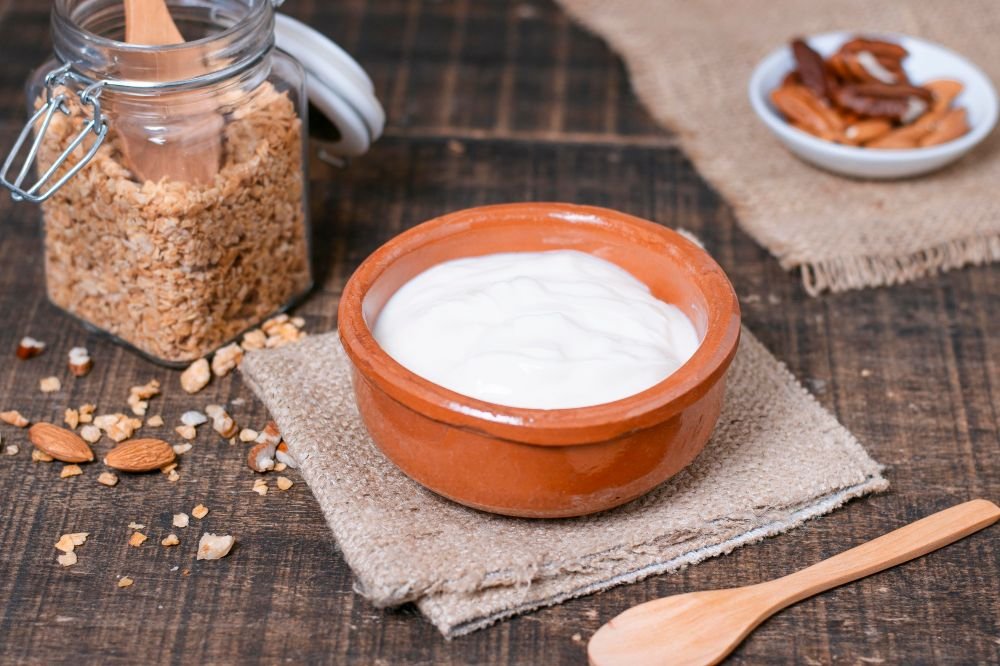How To Make curd
Making Curd: A Step-by-Step Guide, Benefits, and Daily Consumption
Curd, a dairy product with a rich history spanning cultures and cuisines, is revered for its creamy texture, tangy taste, and numerous health benefits. Crafting curd at home is not only a culinary adventure but also a rewarding process that allows you to customize its flavor and consistency. In this comprehensive guide, we’ll delve into the step-by-step process of making curd, explore its myriad benefits, and discuss who can benefit from its daily consumption.How To Make Curd?
Step-by-Step Guide,How To Make Curd
Preparation (10 minutes): Begin by assembling your ingredients and equipment. You’ll need fresh milk (cow’s milk, buffalo milk, or goat milk) and a starter culture (store-bought yogurt with live active cultures or a portion of curd from a previous batch). Ensure your utensils and containers are clean to prevent contamination.
Heating the Milk (15 minutes): Pour the desired quantity of milk into a saucepan and heat it gently over medium heat. Stir occasionally to prevent scorching. Use a thermometer to monitor the temperature, heating the milk until it reaches approximately 180°F (82°C). Heating the milk denatures its proteins, a crucial step for curd formation.
Cooling the Milk (20 minutes): Once the milk reaches the desired temperature, remove it from the heat and allow it to cool down to around 110°F (43°C). Cooling the milk ensures the viability of the live cultures in the starter culture.
Inoculation (5 minutes): Add the starter culture to the cooled milk. Stir the mixture thoroughly to evenly distribute the live cultures throughout the milk.
Fermentation (6-8 hours): Transfer the inoculated milk to a clean, sterilized container suitable for fermentation. Cover the container with a lid or plastic wrap to maintain warmth and prevent contamination. Place the container in a warm, draft-free location with a consistent temperature of around 110°F (43°C). Allow the mixture to ferment undisturbed for 6-8 hours or until it achieves the desired tanginess and thickness.
Refrigeration (2 hours): Once the curd reaches the desired consistency, transfer it to the refrigerator to halt the fermentation process. Chilling the curd also enhances its texture and flavor

Benefits of Curd
Nutrient-Rich: Curd is a powerhouse of essential nutrients, including calcium, protein, vitamins B2 and B12, potassium, and magnesium, all vital for maintaining overall health.
Probiotic Properties: Curd contains live active cultures such as Lactobacillus acidophilus and Bifidobacterium, which promote gut health by restoring and maintaining a healthy balance of beneficial bacteria in the digestive tract.
Digestive Health: The probiotics in curd aid digestion, alleviate gastrointestinal issues such as bloating, constipation, and diarrhea, and enhance nutrient absorption.
Immune Boosting: The beneficial bacteria in curd bolster the immune system, helping the body defend against infections and illnesses.
Bone Strength: The calcium and vitamin D present in curd support bone health, reducing the risk of osteoporosis and fractures, particularly in aging populations.

Who Should Consume Curd Daily?
Individuals with Digestive Disorders: Those suffering from digestive ailments like irritable bowel syndrome (IBS), lactose intolerance, or gastrointestinal infections can benefit from daily curd consumption to alleviate symptoms and restore gut health.
Children and Adolescents: Growing children and teenagers require adequate calcium and protein for optimal growth and development. Including curd in their daily diet helps meet their nutritional needs and supports bone health.
Elderly Individuals: As people age, their bodies may experience diminished nutrient absorption and bone density. Daily consumption of curd can aid digestion, enhance nutrient absorption, and fortify bones, contributing to overall well-being.
What Curd Contains:
Curd primarily contains:
- Protein: Essential for muscle repair, growth, and overall body function.
- Calcium: Vital for bone health, muscle contraction, and nerve transmission.
- Vitamin B12: Necessary for red blood cell formation and neurological function.
- Potassium: Important for heart health, fluid balance, and muscle function.
- Probiotics: Beneficial bacteria that promote digestive health and support immune function.
- Phosphorus: Essential for bone health, energy metabolism, and cell structure.
- Vitamin D (if fortified): Helps regulate calcium absorption and maintain bone health.
In conclusion, curd is a nutritious and versatile dairy product that offers numerous health benefits. By making curd a part of your daily diet, you can support digestive health, strengthen your immune system, promote bone health, and contribute to overall well-being. Whether enjoyed on its own, mixed with fruits, or used in cooking and baking, curd is a delicious addition to a balanced diet.
Heat milk until warm, add a small amount of curd as a starter culture, let it sit for 6-8 hours until it thickens, then refrigerate.
Heat milk until warm, add a few drops of lemon juice or vinegar, let it sit for 6-8 hours until it thickens, then refrigerate.
To make curd with chili, simply mix finely chopped green chili peppers into the curd after it has been prepared. Adjust the quantity of chili according to your taste preferences and serve chilled for a spicy twist to your curd.